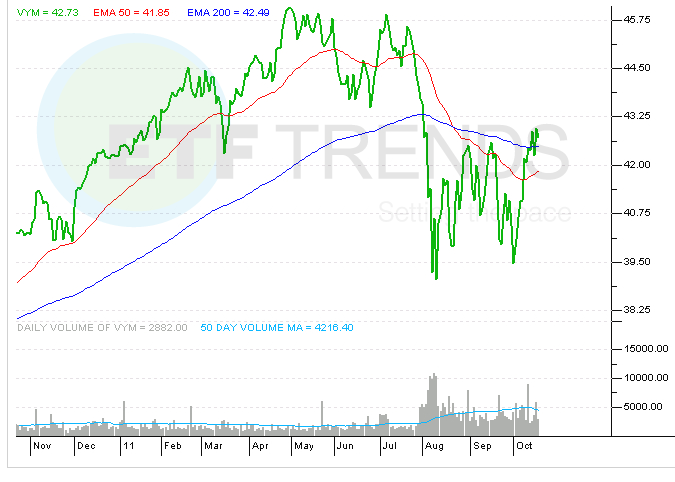Why Investors Need To Take A Closer Look At High Yield ETFs
Post on: 20 Май, 2015 No Comment

by Stoyan Bojinov on October 18, 2011 | Updated July 18, 2012
Dividend investing is one of the oldest and most popular strategies amongst retail and institutional equity investors on Wall Street. Legends like Warren Buffet and Benjamin Graham are well known advocates of this value investing approach, and their success in the financial markets speaks volumes about this timeless strategy. Research conducted by Standard & Poor’s revealed that dividend components were responsible for 44% of the total return in the last 80 years of the S&P 500′s history. To put this into perspective, consider the following: an investment of one dollar, from 1950 to 2010, with dividends and reinvestment of those proceeds, would have performed eight times better than a dollar invested in a similar, but non-dividend paying, security. Clearly, investing in dividend paying companies has proven to be a formidable strategy in times of both prosperity and economic downturns, showcasing the versatility of this simple, but effective, investment strategy.
Perhaps the most obvious appeal of investing in dividend paying stocks is the fact that they generate a current return, which can help to enhance your portfolios risk-adjusted returns over the long haul. Dividend paying stocks tend to bear a lower degree of risk than non-dividend paying ones since investors are more willing to hold onto their positions through both bear and bull markets, since they receive regular cash payments. Another advantage of the dividend investing strategy is that this approach has a tendency to avoid stocks of fraudulent companies, since its a lot easier for companies to manipulate earnings, but there is no substitute for cash payouts made directly to investors–dividends are hard to fake.
Why Are Dividend ETFs So Popular?
The ETF boom of the last several years has provided investors with options for accessing new asset classes and pursuing various investment strategies previously inaccessible to smaller retail investors. Evolution in the ETF industry has brought forth numerous options for investors in pursuit of yield. The exchange-traded product wrapper allows for low-cost, low-maintenance exposure to virtually any corner of the market, allowing for investors to access techniques that may be too difficult, or costly, to implement on their own [see How To Find A High Dividend ETF ].
There are dozens of funds available that offer exposure to dividend paying companies, including both explicit dividend-weighted products and others that focus on sectors that have a tendency to make hefty payouts. Many of the popular dividend ETFs are linked to indexes that consider cash distributions paid in the process of selecting benchmark components and assigning weightings. This strategy may appeal to investors who wish to stray away from traditional cap-weighted products, while also focusing on securities that make meaningful cash payouts. There are also a number of ETFs that select and weight holdings based on dividend yield consistency rather than just magnitude [read Details Of Dividend ETFs: Consistency vs. Yield ].

How To Use Dividend ETFs
Dividend ETFs have a place in nearly every investment portfolio given the versatility of the products offered in the space. Below we briefly highlight the most popular uses of dividend paying funds:
- Enhance Yield: Interest rates remain at record lows, and with no foreseeable rate increases in the near future, many investors are finding it hard to construct a portfolio that delivers attractive current income without taking on excessive amounts of risk. With interest rates on investment grade fixed income securities near zero, investors who require a constant stream of payments from their portfolios have embraced dividend ETFs [see The Best Dividend ETFs Aren’t Dividend ETFs At All ]. For those seeking to beef up current returns with bond yields at all time lows, some of the yields paid out by the dividend ETFs covered in this report might be difficult to pass up. When considering the chart below, notice the significant difference in yield between dividend products, like SDIV. and U.S. Treasuries. Dividend ETFs even rival the yields offered in the junk bond space, as represented by JNK .














